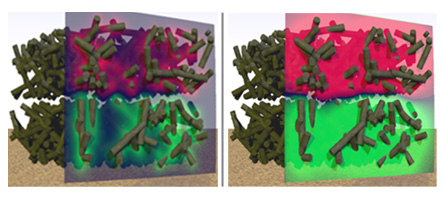- More than 2 years ago
A new way to get electricity out of water could prove to be worth its salt. Mixing salt water and fresh water in a container with carbon electrodes can produce clean, renewable energy, reports Doriano Brogioli of the University of Milano–Bicocca in Italy.

The reaction’s main by-product is brackish water that could be dumped back into the sea, Brogioli says in a paper to be published online in Physical Review Letters.
If further developed, the idea could be the basis for a new type of power plant that could be built in coastal areas, where natural sources of salt water and fresh water already exist, Brogioli says. A device developed using the method could have the potential to produce 1 kilowatt of electric power — enough to power a house, he says.
The idea is feasible but “still in the early stages of development,” says materials scientist Yury Gogotsi of Drexel University in Philadelphia. It will take more research to “bring it to a stage where it can be made … into a large device that could handle cubic meters of water flow,” Gogotsi says.
Brogioli likens his concept to the reverse of desalination, in which electricity is consumed to separate salt ions from seawater. In his method, the combination of fresh and salt water generates electricity when the ions diffuse through water.
In the first stage of the process, salt water is pumped into a container with two charged carbon electrodes. Salt ions — positively charged sodium and negatively charged chloride — are attracted to the surface of one of the two carbon electrodes, depending on the ions’ charge. Next, fresh water is pumped into the container, and the salt ions diffuse away from the surface of the electrodes and mix in the fresh water. Like pulling a rubber band taut, pulling the salt ions away from the charged electrodes creates increased energy in the system — the potential for work.
The amount of energy generated is similar to that harnessed through existing techniques that use fresh and salt water to produce electricity, but at a fraction of the cost, Brogioli says.
Since the 1970s, people have been exploring ways of getting energy from salt water. But many of those methods produce energy from the flow of water across membranes that separate fresh from salt water.
Yet making and maintaining the membranes has proved expensive compared to other sources of renewable energy. The field did not receive attention again until recently, when advances in materials and a drive to find renewable energy resources made the process a popular line of research, Gogotsi says.
Even if a device designed from Brogioli’s method could be used only in areas with a natural abundance of salt water and fresh water, Gogotsi says, it would be a welcome addition to existing renewable energy options such as solar and wind power. Given the limited amounts of fossil fuels in the Earth, “we will have to move to renewable energy sources one way or another,” he says.






